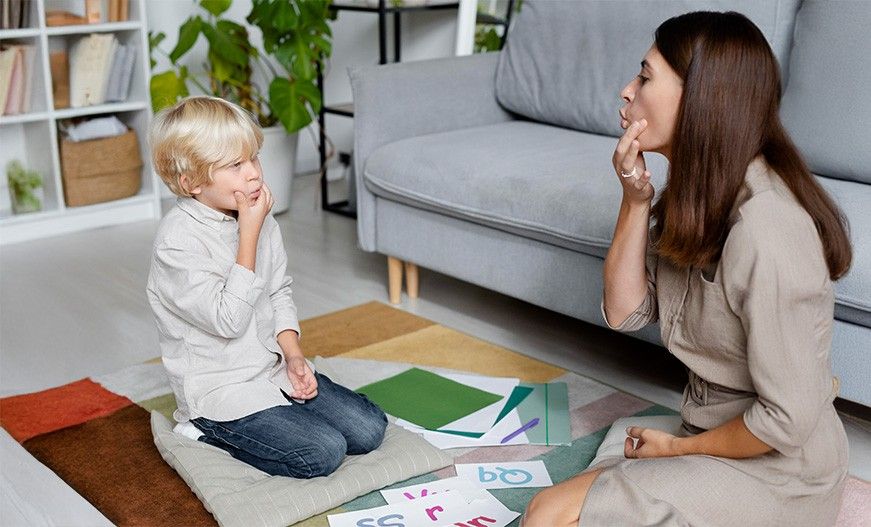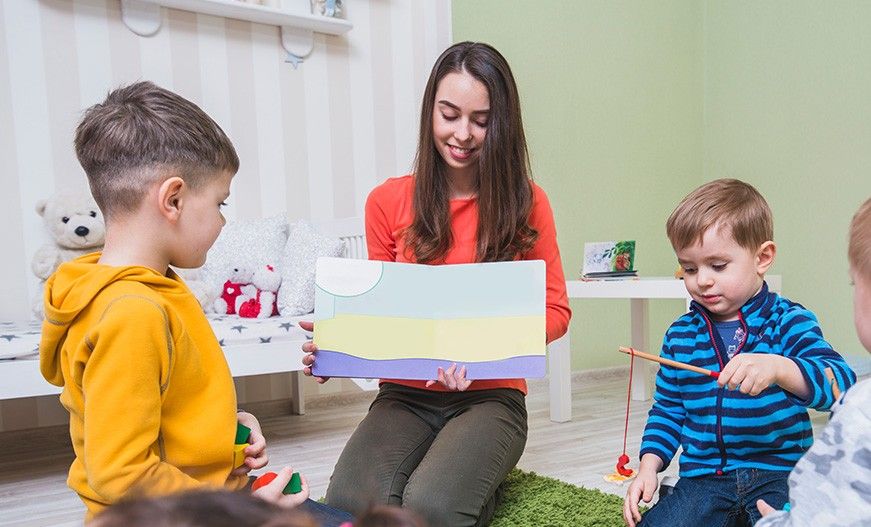Currently Empty: ₹0.00
How to Get Your Toddler to Listen

Written By: Pinky Kharata
Published By: Satya Narayan Pandey
Getting your toddler to listen can be a daily struggle. Whether they are ignoring instruction or testing boundaries, it is easy to feel frustrated at times. But with the right approach, parents can make things easier. In how to get your toddler to listen, we will go through some simple strategies that actually work.
Parents don’t have to yell or endlessly repeat their instructions. From clear communication to fun ways to grab their attention. These tips help build a stronger connection while making daily routines smoother. With a little patience and the right mindset, you’ll see big changes in how your toddler responds.
7 Steps To Get Kids To Listen
Getting kids to listen isn’t about being louder, it’s about communicating smarter. Small shifts in language and approach can make a big impact. Using positive reinforcement, clear instructions, and a calm tone helps build trust and cooperation.

1. Get On Their Level
When you need your child’s attention, the first step is making sure they actually see and hear you. Get down to their eye level. This small shift strengthens communication and makes them feel heard. Eye contact helps ensure they’re focused on you, not just tuning out another voice in the background. Being physically present shows them that what you’re saying matters. Instead of feeling like they’re being ordered around, they feel like they’re part of a conversation.
2. Do Away With “Don’t”
Telling kids what not to do doesn’t always work. If you say, “Don’t run inside,” they still hear “run.” Instead, try, “Please walk inside.” It’s clearer and easier to follow. Kids respond better when you tell them what to do instead of what not to do. A simple shift in words makes a big difference.
3. Say Yes To “Yes”
Parents often default to saying “no” because of the endless requests they get daily. While some situations require a firm refusal. But constantly dismissing your child makes them more likely to tune you out. Instead, look for chances to say “yes” in a way that sets boundaries while still engaging them. For example, swap “No, we can’t go to the park” with “That sounds fun! Should we go Friday or Saturday?” A little flexibility makes kids more receptive when you need them to listen.

4. Shorten Your Speech
Parents have a habit of over-explaining when a few words would do. The more they ramble, the quicker kids tune out. Keeping a conservation short, clear, and to the point helps kids actually listen. Instead of turning a simple answer into a full-on lecture.
5. Say “Thank You” In Advance
Setting positive expectations can work wonders for a child’s behavior. Instead of saying, “I better not see your towel on the floor again,” try, “Thank you for hanging up your towel after your shower.” This small shift builds trust and encourages good habits. Creating a sense of responsibility through positive reinforcement makes a big difference. When kids feel trusted and acknowledged, they’re more likely to follow through and listen.
6. Ensure Comprehension
A simple way to make sure children understand is to have them repeat back what they heard. Studies show that even adults forget or misinterpret up to 80% of what doctors tell them. That’s why the teach-back method works so well. It helps confirm information and improve retention. The same trick works with kids. Make eye contact, keep instructions short, and ask them to repeat it. This strengthens communication, reduces misunderstandings, and makes listening a habit.
7. Make An Observation
Instead of scolding when something is left undone. Parents can try making a simple observation. Say, “I see toys on the floor.” This avoids power struggles and helps them take responsibility. It also gives them a chance to come up with a plan on the spot. When they respond, encourage them with a positive comment like, “That’s great! I appreciate your help.” This keeps the conversation light while still getting things done.
Conclusion
Small changes can make a big difference in how to get your toddler to listen. Clear communication, patience, and positive reinforcement help build trust and cooperation. When kids feel heard and respected, they listen better. Stay calm, be consistent, and make listening a two-way street. With time, you’ll see a real change in how they respond.
FAQs: How to Get Your Toddler to Listen
Parents often wonder how to get their child to listen without constant repetition or frustration. Below are common questions and answers to help make communication easier and more effective.

Q1. How Do You Discipline A Toddler Who Doesn’t Listen?
Ans: In this situation parents have to stay calm, set clear boundaries, and use positive reinforcements. They have to redirect the child’s attention to the task at hand.
Q2. What Causes Toddlers To Not Listen?
Ans: Toddlers may ignore instructions due to distractions, lack of understanding, or a desire for independence. However, clear and simple communication helps improve listening.
Q3. How Do I Get My 2 Year Old To Listen And Behave?
Ans: Use short, clear instructions, offer choices, and praise good behavior. Parents should create a routine and patiently guide their child to follow it.
Q4. How To Get A Toddler To Listen Without Shouting?
Ans: Get down to their level, make eye contact, and speak calmly. Using positive language and giving them time to respond encourages better listening.







